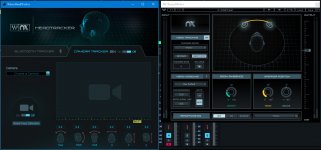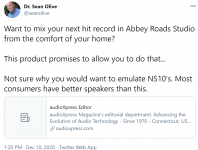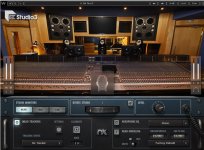Remembering back a few years to one of the most amazing sonic images I've heard. It was at the Parts Express speaker build contest in Ohio. There was a pair of skinny towers that had Ohm Walsh omni tweeters on top. Nothing else in the contest sounded like that, the image was startlingly pin-point. Radically more precise than any other speaker in the contest. Having heard the same piece of music on a dozen other speakers before and after they stood out as amazing and unique. All of us noticed it right away. (I was in the front row as a judge). They had almost no baffle at all.
The walls were farther away than they would ever be in a domestic setting, which might have have helped. Of course the distance to the walls didn't make any other speaker image like that.
The walls were farther away than they would ever be in a domestic setting, which might have have helped. Of course the distance to the walls didn't make any other speaker image like that.
Toole included the impact of program material in his 3rd edition.
https://core.ac.uk/download/pdf/101155.pdf
Agreed. I have another question. When will people stop pursuing a perfect or even good reproduction of a sound field with only two (2) channels at their disposal?
It's going to happen when Google, Amazon, and Apple rebuild their music catalogs to repair bad recordings and then convert them to multi-channel.
Google's DeepMind has been working on this for a while. Wavenet: A generative model for raw audio.
You need to recreate the music from scratch. Purists will probably complain but I bet the recreation/regeneration will be more genuinely true to the original performance than the existing recordings of the performance.
Apple's new headphones are sort of another example. They have sensors that change the music based on your head position. If you build a device like that you are definitely going to attack the root problem of recordings.
Apple's new headphones are sort of another example. They have sensors that change the music based on your head position.
That sounds like a bad idea. Head movement can help us locate sounds.
What is the root problem of recordings?If you build a device like that you are definitely going to attack the root problem of recordings.
I notice you went here earlier when asking me a question. Anyway, I don't "really like imaging", but I tend to dislike very early reflections and diffractions.Yes, we're going to have outliers and those people will really like imaging.
Do you think that is wrong?
Are you implying that compromises exist in Earl's speaker for the reasons you are talking about?Geddes did something smart. He decided he liked something and was satisfied. He's obviously aware of the compromises but he's happy with his system.
I went looking for a picture of your speaker, but I couldn't find one...
That sounds like a bad idea. Head movement can help us locate sounds.
They simulate what happens (time/level deviation) in nature to create the impression of a source located within a 3d environment.
What do you think are the best or most useful quotes from that paper?
Mathematics lol....Some type of branch off of convolution I'm sure...with waves nx, they have some type of headphone sensor or they can use your camera to get a reading of head position...I never use that feature....I just like the room sim and headphone eq.

this type of software will supersede the sound quality of any loudspeaker in a room....very soon if not all ready....mainly because the room character can simulate physics not possible on earth...
this type of software will supersede the sound quality of any loudspeaker in a room....very soon if not all ready....mainly because the room character can simulate physics not possible on earth...
Attachments
Last edited:
What is the root problem of recordings?
The recordings themselves.
"You may not like the show, but the audio on Disney's "Mandalorian" is extraordinary, as is the visual. The film business is so far ahead of the audio one that it is alarming. I found this out when I looked into video compression. The video guys had done an enormous amount of work on perception - way beyond anything done for audio.
And in video they accept the science. In audio it's still "sounds good to me, that's all that counts." - Geddes post #4389
And this tweet capture from Sean Olive is straight ruthless.
Attachments
How does that work? Are they special recordings?
"Apple says it uses algorithms to convert surround sound (5.1, 7.1, or Dolby Atmos) into spatial audio. From there, it applies directional audio filters and adjusts the frequencies going to each ear to achieve the immersion effect"
Apple’s new spatial audio feature turns the AirPods Pro into a home theater for your ears - The Verge
Thats not ruthless at all....thats embaressing, he knows so little about sound engineering that he completely missed why the ns10 caught on!? (wow)....if he wanted to take a jab at (waves nx abbey roads?) software... there had to of been something more tangible then questioning the replication of ns10's lol......not to mention that Waves abbey roads emulates the response out of the 3 sets of speakers while playing in the studio at the sweet spot ( Studio 3’s three sets of stereo speaker setups: near-fields, mid-fields, far-fields)...which reminds me.....I bought this months ago and still haven't tried it out....I had to fix my DAW before I could use the new plug ins....(I forgot I even bought it wtf) I'm not saying this software is perfection....I'm saying I got the feeling like I got when Apple went to the cloud....things are about to change...when I first heard and bought the first WavesNX...my mind said....wait until the rest of the software gets in this game and think how far they'll make it in 10 years if its at
"this" level now...its all math.
(further proving my point why sound engineering and loudspeaker engineering need to bridge the gap lol but that is already a whole nother post lol!)
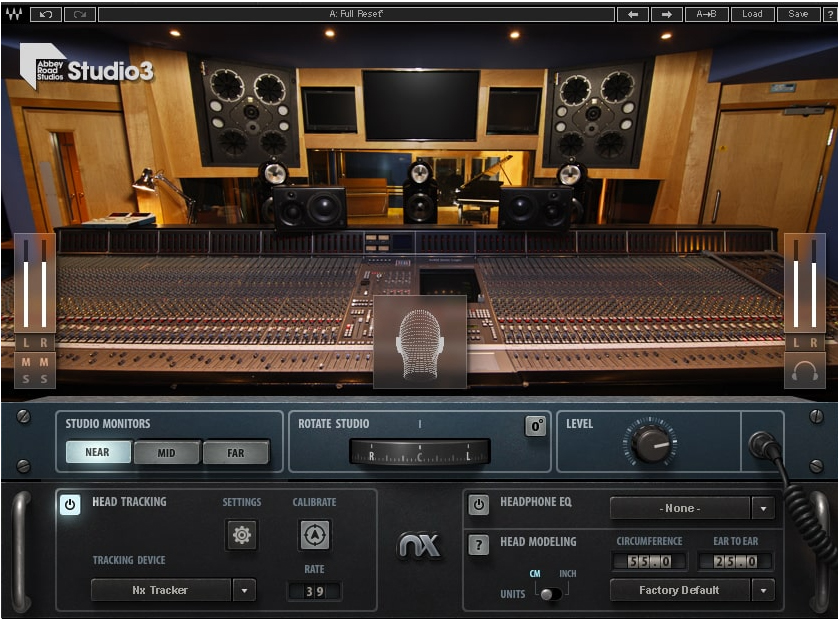
"this" level now...its all math.
(further proving my point why sound engineering and loudspeaker engineering need to bridge the gap lol but that is already a whole nother post lol!)
Attachments
Last edited:
Fostex FF85wk's in spheres running from 200Hz up. The imaging is impressive.
An FF85wKen in a narrow baffle with low diffraction images like crazy too.
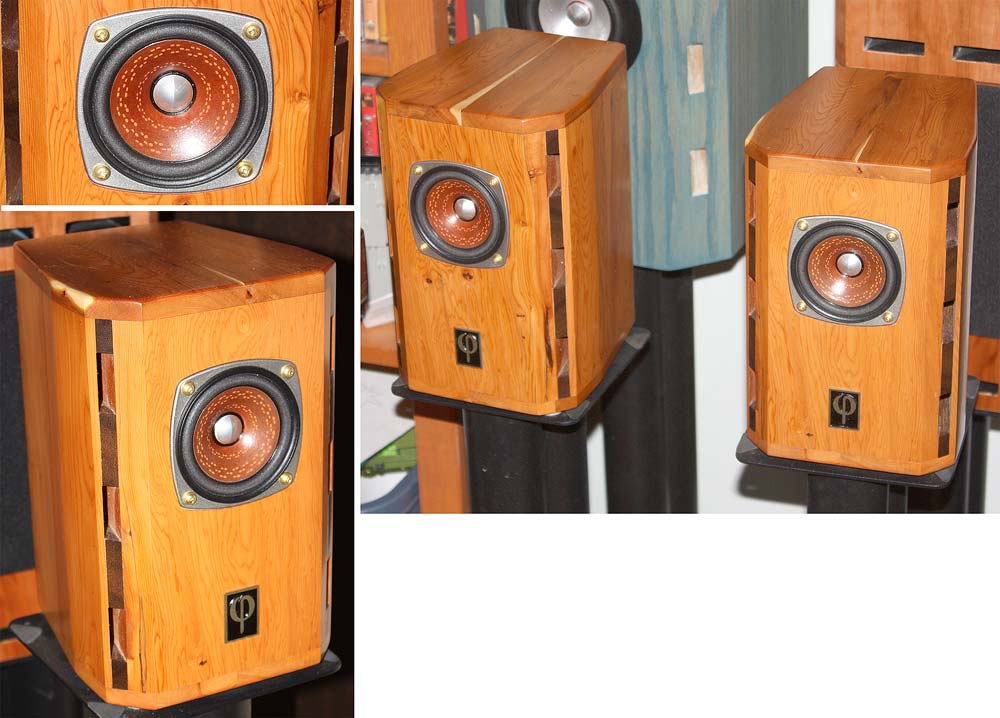
dave
There is a lot of great and enjoyable work in cinema sound, for sure. But if you use that to dismiss over 140 years of musical recordings, I don't really know what to say.The recordings themselves.
While you're wearing headphones?That sounds like a bad idea. Head movement can help us locate sounds.
I think you are coming to conclusions that are not entirely correct like above. Without the full data from the study there is no way to know why the circled score was given higher than the others. It could simply be that a single listener rated everything higher than anyone else, inexperienced listeners often give higher scores and greater variation. Maybe it was an experienced listener who just really liked it for some reason, we will never know.I circled one of the dots in red to make sure people understand I'm not conflating generalization with universal truth. Especially since this is research on preferences. Yes, we're going to have outliers and those people will really like imaging.
Everything about speaker and system design is a comprise. Geddes seeks to get the best of imaging for studio recordings by removing early reflections below 10ms but make the rest of the room very live so there is an abundance of late reflections to give back some of the spaciousness etc.I think Geddes did something smart. He decided he liked something and was satisfied. He's obviously aware of the compromises but he's happy with his system.
It doesn't have to be one or the other, just like the width of the baffle 😉
There is a lot of great and enjoyable work in cinema sound, for sure. But if you use that to dismiss over 140 years of musical recordings, I don't really know what to say.
There's a used record store downtown. They have a significant section devoted to vintage stereo equipment. Really nice guys. They'll tell you everything you wanted to know about tube amps then pull out their smartphones to show you photos of their systems.
Head movment adjustment is important for VR, and i would guess important for when you are listening to headphones and would like it to sound like the speakers are fixed.
The AirPods Max do things headphones haven’t done before. We’ll see if people find its functionality useful or not.
dave
The AirPods Max do things headphones haven’t done before. We’ll see if people find its functionality useful or not.
dave
"Apple says it uses algorithms to convert surround sound (5.1, 7.1, or Dolby Atmos) into spatial audio. From there, it applies directional audio filters and adjusts the frequencies going to each ear to achieve the immersion effect"
Apple’s new spatial audio feature turns the AirPods Pro into a home theater for your ears - The Verge
Thanks, I can see how that might work to create some kind of effect, at least there are multiple sources to play with.
- Home
- Loudspeakers
- Multi-Way
- Are modern narrow baffle designs inherently flawed?
